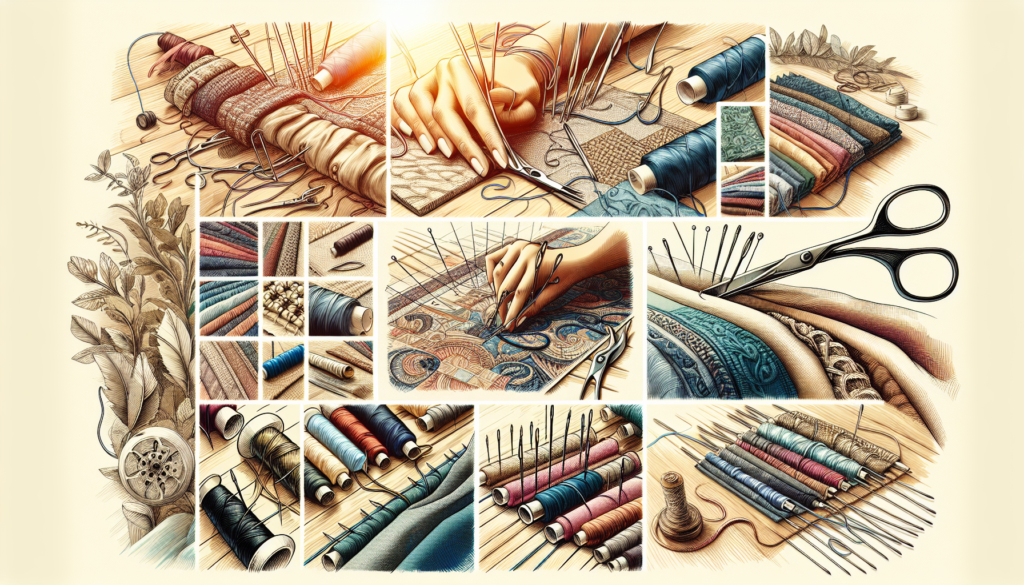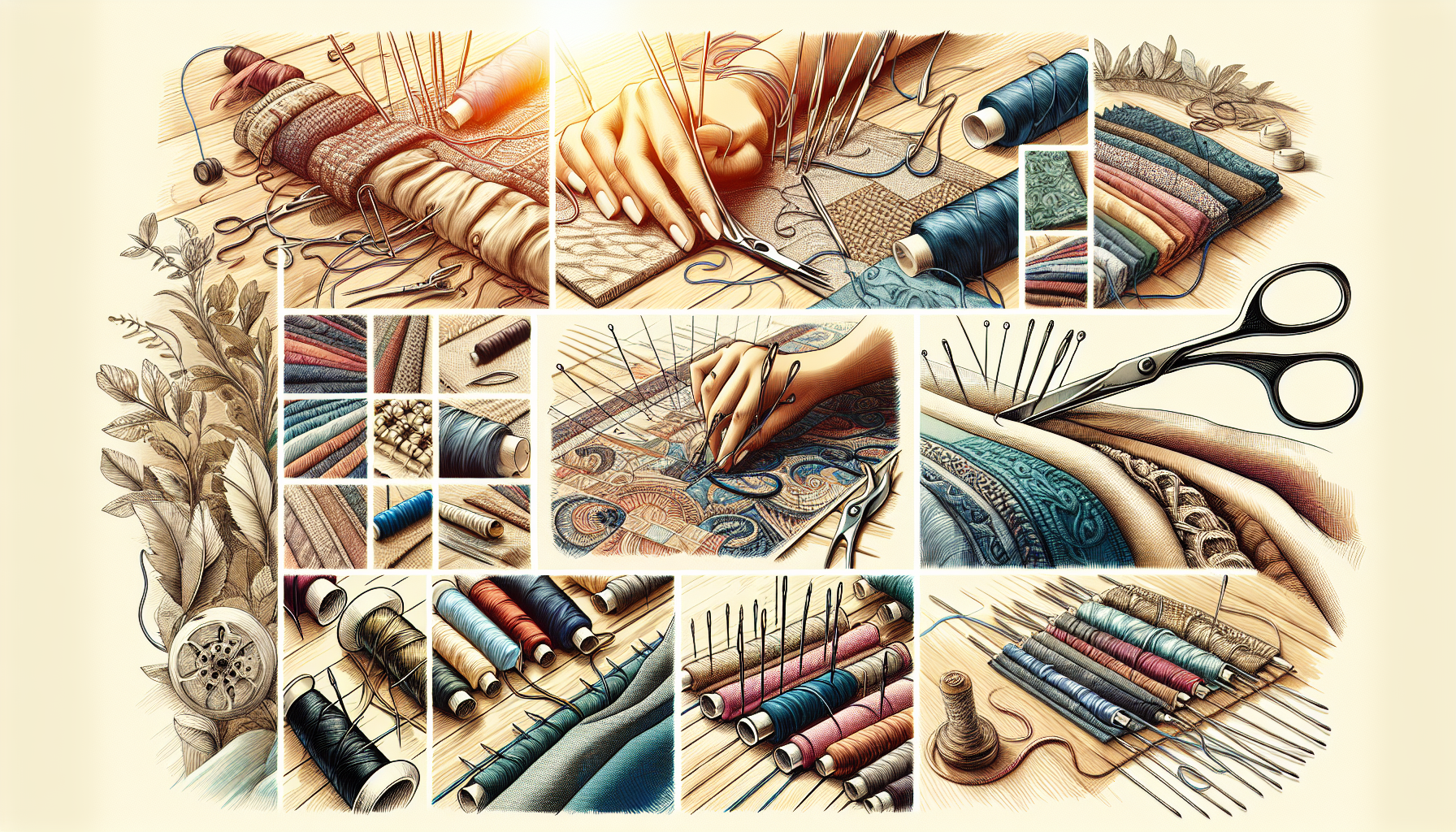Let’s talk about the art of stitching! Have you ever wondered what the toughest stitching technique is? From delicate embroidery to heavy-duty sewing, there are countless ways to bring fabrics together. Whether you’re a novice or an experienced seamstress, exploring the world of stitching can be both exciting and challenging. Join us as we unravel the mystery behind the toughest stitching method and discover the techniques that will truly put your skills to the test. So, grab your needle and thread, because we’re about to embark on an exciting sewing adventure! Have you ever wondered what type of stitching is the toughest? With so many different types of stitches available, it can be overwhelming to know which ones are the strongest. In this article, we will explore the various types of stitches and discuss the factors that affect their strength. We will also compare different stitching techniques to determine which ones provide the utmost durability. So let’s dive in and find out which stitching technique comes out on top!
Types of Stitches
Before we delve into the world of stitching techniques, it is important to understand the different types of stitches. Stitches can be broadly categorized into two main types: hand stitches and machine stitches. Hand stitches are sewn using a needle and thread, while machine stitches are created by sewing machines. Each type of stitch has its own characteristics and purposes, but when it comes to toughness, they are all evaluated based on their strength and durability.
Factors Affecting Stitch Strength
Several factors come into play when determining the strength of a stitch. The type of thread used can make a significant difference in stitch strength. Threads made from stronger fibers, such as polyester or nylon, tend to create more robust stitches compared to weaker fibers like cotton or silk. The thickness of the thread also plays a role, with thicker threads generally resulting in stronger stitches.
The tension at which the stitches are sewn also affects their durability. If the tension is too loose, the stitches may unravel easily, whereas if it is too tight, it may weaken the fabric or thread. A moderate tension is often recommended to achieve the optimum strength for the stitch.
The fabric itself is another crucial factor. Different fabrics have varying levels of strength and resistance to tearing. Sewing stitches on a delicate fabric, such as chiffon or silk, require a more delicate approach to prevent tearing, while sturdier fabrics, like denim or canvas, can handle more robust stitches.
Lastly, the skill and technique of the person doing the stitching can greatly impact the strength of the stitch. A well-executed stitch is more likely to withstand stress and tension compared to a hastily done one. So, practice and experience play a significant role in achieving strong stitches.

Comparison of Stitching Techniques
Now let’s explore some of the most popular stitching techniques and compare their strength and durability. Each technique has its own unique features and applications, so let’s see how they stack up.
1. Lockstitch
The lockstitch is one of the most commonly used stitching techniques, both in hand sewing and machine sewing. It is created by interlocking two threads – one from the top and one from the bottom – to form a strong and secure stitch. Lockstitch provides excellent durability and is often used in garments, upholstery, and accessories.
2. Chain Stitch
Chain stitch is a looping stitch that forms a chain-like pattern. It is created by interlocking loops of thread, with the needle passing through the previous loop to create the next one. While chain stitch provides flexibility and stretchability, it may not be as strong as other stitching techniques due to the potential for the entire row of stitches to unravel if one loop breaks.
3. Overlock Stitch
Overlock stitch, also known as a serged stitch, is commonly used to finish raw fabric edges and prevent fraying. This stitch uses multiple threads to create a secure and neat edge. Overlock stitches provide good strength and are often used in clothing construction, especially for knit fabrics.
4. Flatlock Stitch
The flatlock stitch is commonly seen in sportswear and activewear. It is created by interlocking two fabric layers with the raw edges exposed on the outside, giving a decorative and flat seam. While the flatlock stitch provides a flexible and comfortable finish, it may not be as strong as other techniques due to its construction.
5. Triple Stitch
As the name suggests, the triple stitch involves sewing three parallel rows of stitches. This technique provides extra strength and durability, making it ideal for heavy-duty sewing projects. Triple stitches are commonly used in upholstery, bags, and outdoor gear.
6. French Seam
French seam is a technique used to encase raw fabric edges within a tidy and secure seam. It involves sewing two rows of stitches, one on the right side and one on the wrong side of the fabric, resulting in a clean finish on both sides. While French seams are aesthetically pleasing and provide moderate strength, they may not be suitable for heavyweight fabrics.
7. Running Stitch
The running stitch is one of the simplest and quickest stitches to execute. It involves passing the needle through the fabric and pulling the thread to create small, evenly spaced stitches. While the running stitch is not the strongest of stitches, it is useful for basting, gathering, and temporary stitching.
8. Backstitch
The backstitch is a strong and durable hand stitch often used for sewing seams and creating decorative outlines. It involves sewing a series of small, overlapping stitches backward, creating a solid line of stitching. Backstitch provides excellent strength and is commonly used in embroidery and leatherworking.
9. Whipstitch
Whipstitch is a versatile stitch that can be used for both joining fabric pieces and finishing raw edges. It involves passing the needle across the fabric edge and wrapping the thread around it, creating a continuous line of stitching. While whipstitch provides moderate strength, it may not be as secure as other techniques for heavy-duty applications.
10. Box Stitch
Box stitch, also known as a square stitch, is often used in leatherworking and heavy-duty sewing projects. It is created by sewing a series of straight stitches in a square pattern, providing excellent strength and stability. The box stitch is commonly used in creating belts, bags, and harnesses.
Conclusion
In conclusion, the toughest stitching technique depends on various factors, including the fabric type, thread strength, tension, and the purpose of the stitch. While each stitching technique has its own strengths and weaknesses, some stitches, such as the lockstitch and triple stitch, are known for their exceptional durability and strength. Ultimately, the toughest stitching technique will vary based on the specific requirements of your sewing project. So, the next time you embark on a sewing endeavor, consider the factors we’ve discussed and choose the stitching technique that best suits your needs and ensures the longevity of your creations. Happy stitching!

